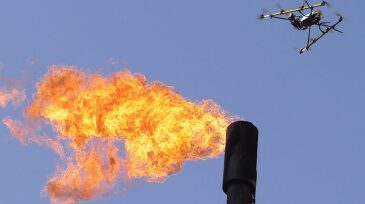unmanned aerial vehicle
-
Intel and Cyberhawk released a case study outlining the successful inspection of a gas terminal near the coast of Scotland using commercially available drone technology.
-
Operators need to take steps to protect their facilities from drone security breaches by outsiders. The costs an attacker incurs in developing tools to break into and control infrastructure is low compared to the costs an operator incurs in defending against those tools.
-
Behind the use of most drones and unmanned aerial vehicles is the issue of safely and legally operating beyond the visual line of sight (BVLOS). Jim Cieplak talks about his work with Harris Corporation and BVLOS solutions.
-
Developments in the emerging technologies of unmanned vehicles are leading to new land, sea, and air applications in the oil and gas industry.
-
A closer look at recent unmanned aerial vehicle (UAV) regulations and sensor technologies shows the areas in which they could have a major impact on oil and gas projects in the future.
-
One of the defining features of the 21st century will undoubtedly be the changing relationship between humans and automated machines.
-
In June, the United States Federal Aviation Administration (FAA) issued the first approval for the overland use of unmanned aerial vehicles (UAVs) in Alaska.
-
Unmanned aircraft are finding their place in the oil and gas industry by providing aerial geologic modeling to address reservoir-related challenges and making inspections safer.
Page 2 of 2







